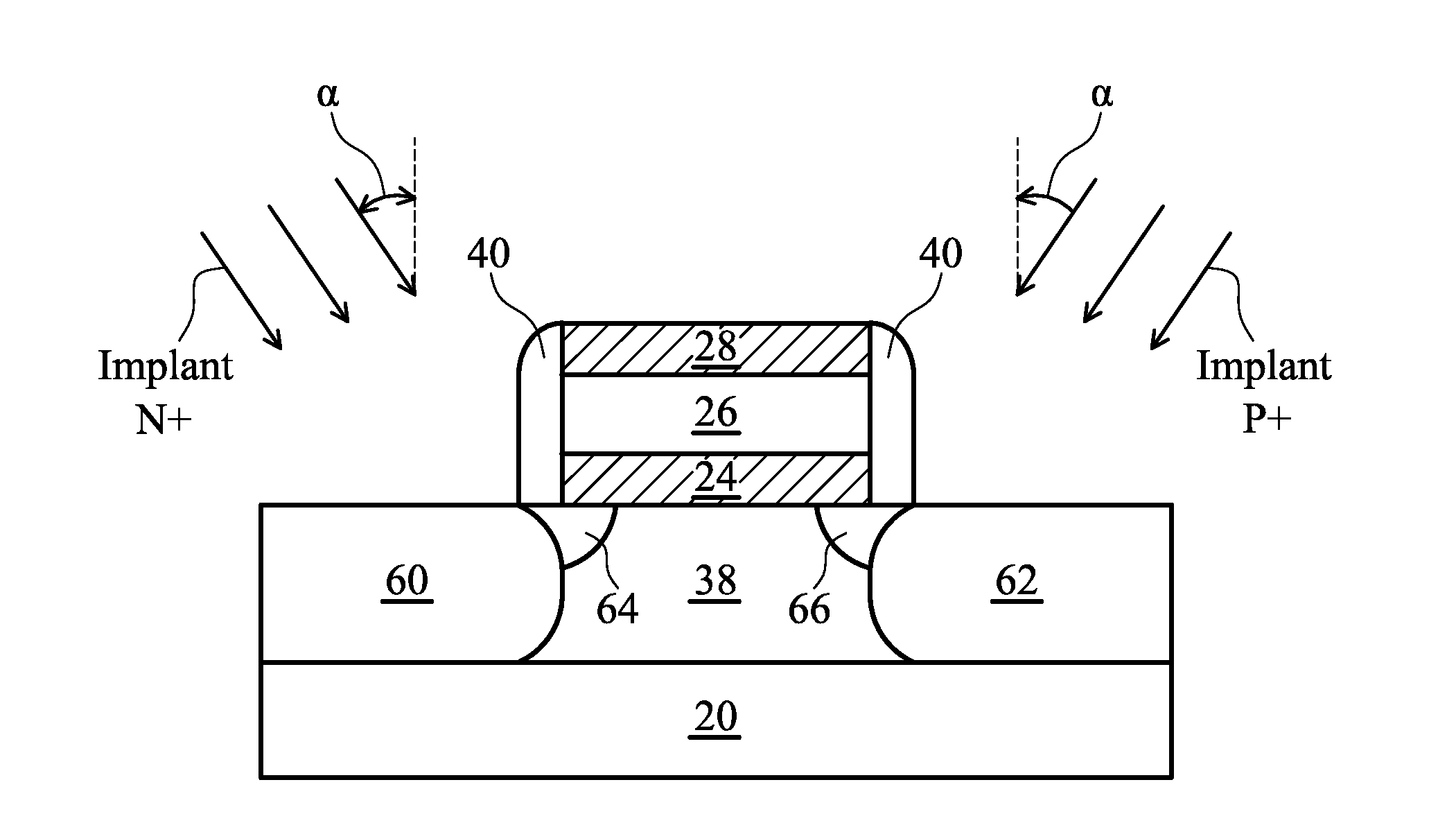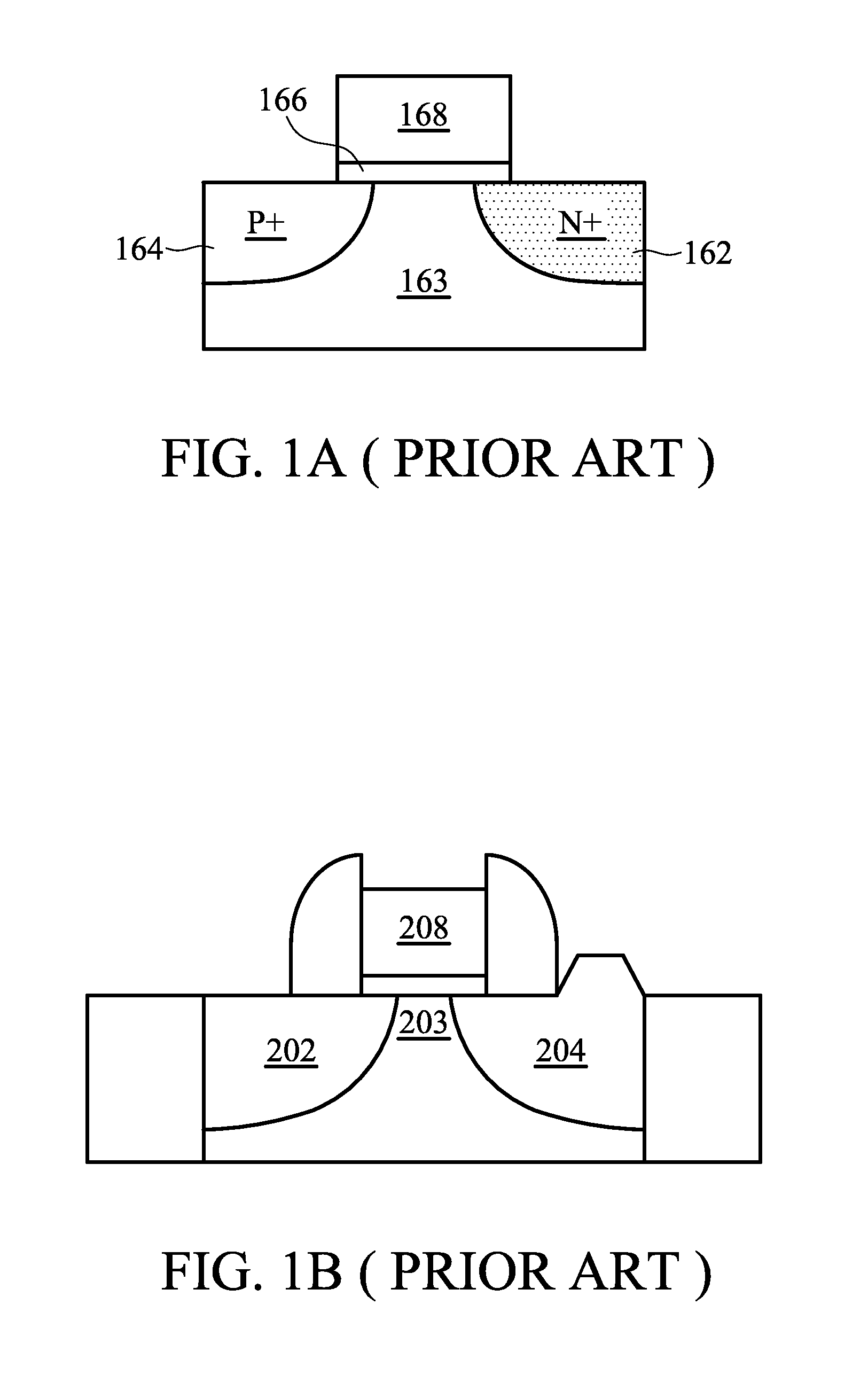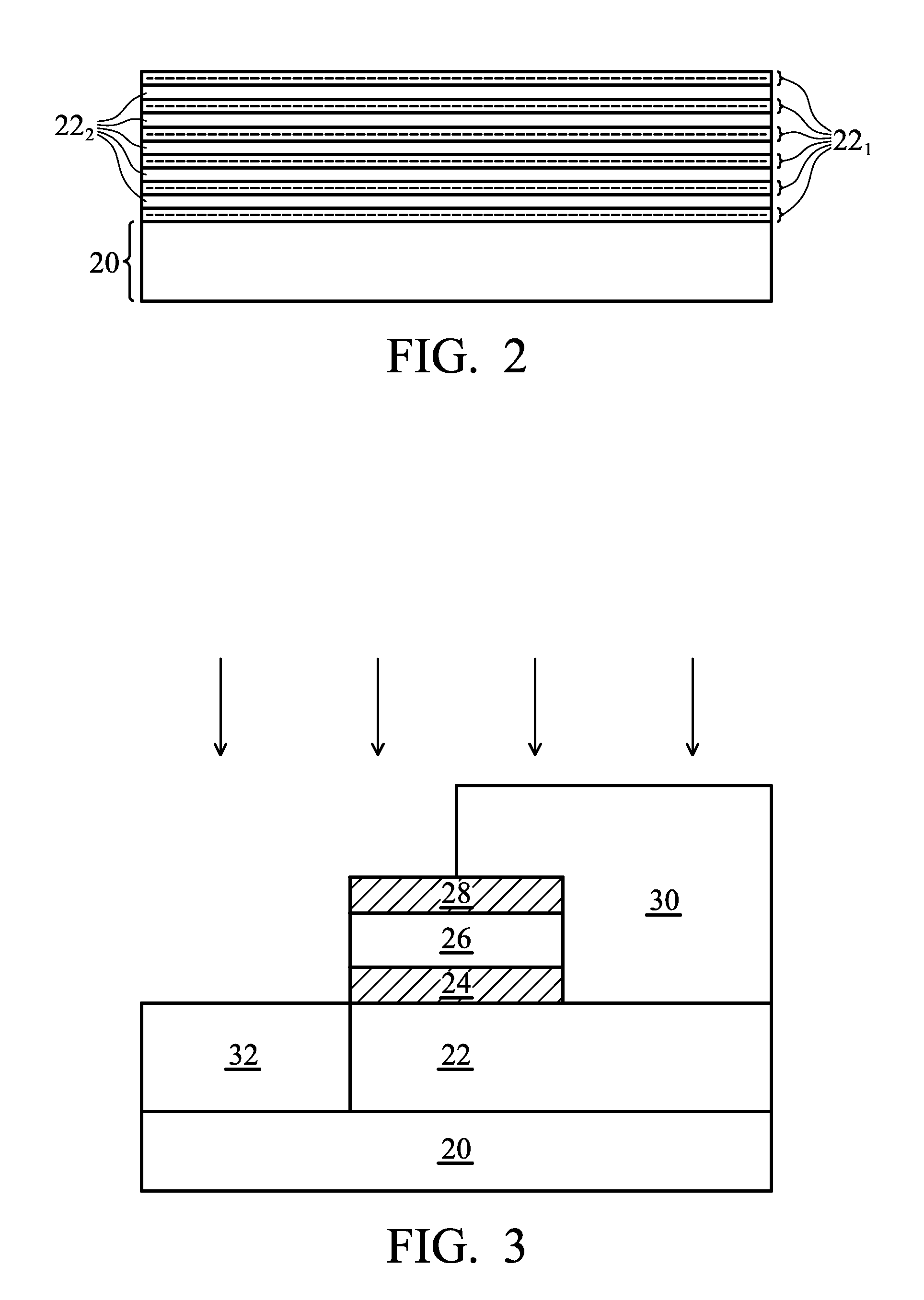Tunnel field-effect transistors with superlattice channels
a tunnel-effect transistor and super-lattice channel technology, applied in the field of tunnel-effect transistors with superlattice channels, can solve the problems of sacrificing source-drain leakage current, unable to achieve fast switching of ultra-thin-body mosfets on soi or finfet devices, and unable to achieve fast switching at low operation voltage for future nanometer devices. achieve the effect of reducing gate leakage current, improving on-current, and reducing the curren
- Summary
- Abstract
- Description
- Claims
- Application Information
AI Technical Summary
Benefits of technology
Problems solved by technology
Method used
Image
Examples
Embodiment Construction
[0026]The making and using of the presently preferred embodiments are discussed in detail below. It should be appreciated, however, that the present invention provides many applicable inventive concepts that can be embodied in a wide variety of specific contexts. The specific embodiments discussed are merely illustrative of specific ways to make and use the invention, and do not limit the scope of the invention.
[0027]Novel tunnel field-effect transistors (FETs) formed of gated p-i-n diodes with superlattice channels and methods for forming the same are provided. The intermediate stages of manufacturing preferred embodiments of the present invention are illustrated. The variations of the preferred embodiments are then discussed. Throughout the various views and illustrative embodiments of the present invention, like reference numbers are used to designate like elements.
[0028]A first embodiment of the present invention is provided in FIGS. 2 through 9. Referring to FIG. 2, substrate 2...
PUM
 Login to View More
Login to View More Abstract
Description
Claims
Application Information
 Login to View More
Login to View More - R&D
- Intellectual Property
- Life Sciences
- Materials
- Tech Scout
- Unparalleled Data Quality
- Higher Quality Content
- 60% Fewer Hallucinations
Browse by: Latest US Patents, China's latest patents, Technical Efficacy Thesaurus, Application Domain, Technology Topic, Popular Technical Reports.
© 2025 PatSnap. All rights reserved.Legal|Privacy policy|Modern Slavery Act Transparency Statement|Sitemap|About US| Contact US: help@patsnap.com



